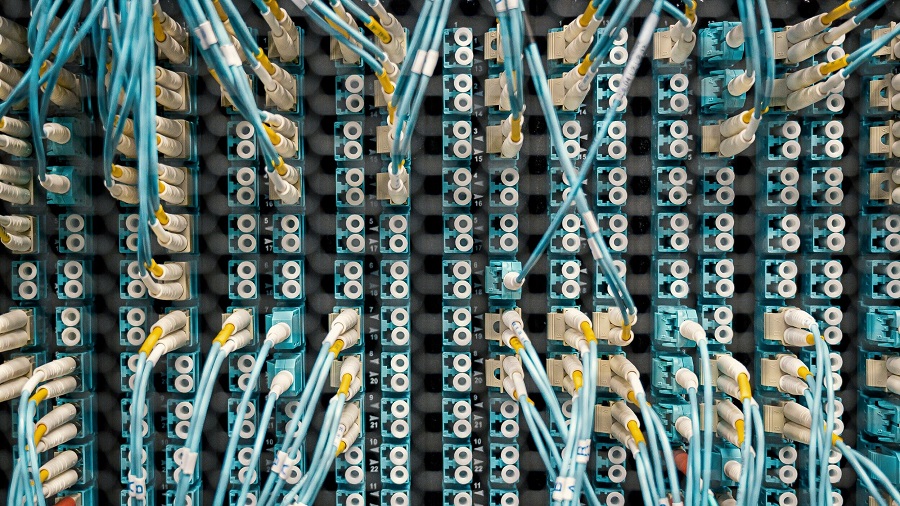4 Benefits of Fiber Optic Internet for Business That are Hard to Avoid

Businesses are always being pushed by their Internet Service Providers (ISPs) to get connections with higher bandwidths. Getting a higher bandwidth connection is like increasing the ‘size’ of your internet cables. More data is permitted to be transferred in high-bandwidth internet connections. Imagine water flowing from two pipes – one’s bigger than the other, so it obviously allows more water to pass through.
Businesses interested in increasing the ‘size’ of their internet cables should also consider making their internet connections sturdier. Traditional coax or copper cables that carry DSL (Digital Subscriber Line) or cable internet are not sturdy enough anymore to efficiently facilitate long-term or long-distance connections. Fiber cables, on the other hand, are built to last.
Here’s are some unavoidable advantages of fiber cable networks for businesses –
Support as Many Users as You Want
Businesses usually look at the number of expected internet users to assess their bandwidth needs. The more the number of people on your facility’s connectivity, the more bandwidth your organization will need. If you’re a large company and employ hundreds of employees, not having high bandwidths is something you cannot afford.
For instance, hospitals and large medical centers were recently overcrowded. The Federal Communications Commission (FCC) had recommended such facilities to have internet connections with a minimum bandwidth of 1000 MB/ps. Or else, supporting advanced Electronic Health Record systems (EHRs), basic management functions like emailing, instant image transfers, etc., would be impossible.
When the COVID19 pandemic rolled out, the demand for faster internet connections at these facilities rose sharply. Nursing homes with traditional coax or copper cable-based Internet connections were unable to support the bandwidth needs of their workers. In contrast, facilities that had fiber links suffered from no such issues. These facilities were able to simultaneously use their EHR systems, provide HD video consultations, and remotely monitor their patients with ease.
Now, it’s hard to blame the hospitals and medical centers that didn’t have high-bandwidth internet connections. They never expected surges in the number of patients they host or the demand for high-speed internet connection. But, these facilities have now realized that fiber link connectivity is vital for addressing such unexpected situations. Companies never know when their internet needs may surge. Having a high-speed fiber internet connection makes them future-proof.
Build Connections with Cloud-Based Software Tools
Several companies are currently employing cloud-based software platforms. These private systems and platforms are far more secure and efficient than native solutions. However, a cloud-based platform is only as fast and reliable as the internet connection that powers it. If your company has poor internet service, your highly-advanced cloud infrastructure is essentially useless.
Why slow down the rate at which employees complete their tasks, especially after you’ve invested a lot in building your company’s cloud-based infrastructure? Fiber services provide the fastest and the most reliable internet connections, which make it easy for workers to navigate their company’s cloud infrastructures.
Symmetrical Internet Speeds
You’ve probably noticed that downloading files on your DSL and cable connections is easier and faster than uploading files. That’s because these traditional connections don’t offer symmetrical Internet speeds – they can facilitate fast downloads but not fast uploads. For residences, this asymmetry is not too big of an issue. They only download files and stream data – uploading files isn’t really a concern for them.
Businesses, however, need to provide their employees with internet connections where it’s easy to both upload and download files. Employees frequently need to upload files every day to stay productive. One of the many benefits of fiber optic internet for business applications is that fiber connections offer symmetrical Internet speeds. Employees get the same high speeds while uploading files. Plus, the average speed that fiber optic internet connections provide can go up to 10 gigabytes per second, which is ten times (possibly more) faster than DSL or Cable connections.
Businesses must invest in increasing the rate of data transfer from their computers to the internet. Internet speed has become vital to a business’s ability to expand its productivity. With fewer delays in uploading/downloading files, employees can easily multi-task, manage large workloads, access cloud-based programs without facing latency issues, and take as many videoconferencing calls as they want.
Spend Less Time Troubleshooting
As stated above, fiber connections are extremely reliable. They’re not prone to environmental damage like traditional coax or copper cable-based Internet connections. Hence, the average amount of time office employees have to experience downtime or spend troubleshooting connectivity issues is much less when they’re using fiber technology. IT professionals also don’t need to spend too much time maintaining the system as costly disruptions are extremely rare on these reliable internet connections.
In today’s hyper-connected world, these cables provide super-fast internet speeds that all businesses crave. A fiber link can give large and small-scale companies enough bandwidth to accommodate all their internet needs in the fastest way possible. But high speeds aren’t the only benefit these systems provide to businesses. Only 16.5 percent of all Internet connections in the US are fiber-based. So, companies that invest in fiber broadband connections now will also gain competitive edges!